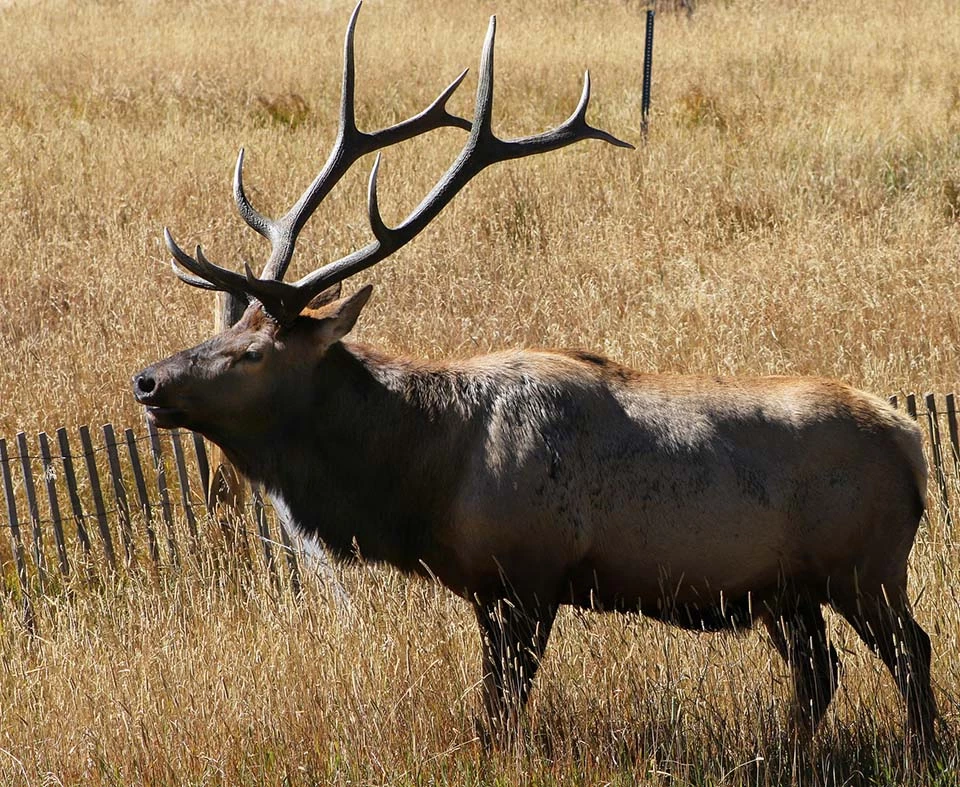Last updated: December 19, 2021
Article
Chronic Wasting Disease

NPS Photo/ M. Reed
Disease Background
- Chronic wasting disease (CWD) is a prion disease which is a unique family of diseases caused by a malformed protein.
- CWD infects animals in the cervid family (deer, elk, moose, and reindeer).
- The malformed prion protein accumulates in the brain and other tissues causing neurological signs, emaciation, and death. Once clinical signs are observed the disease is always fatal.
Geographic Range
- CWD was initially identified in Colorado and Wyoming in the 1960s and 1970s but has since spread east across the United States and west as far as Utah.
- It has been detected in free-ranging or captive cervids in at least 24 U.S. states, two Canadian provinces, South Korea, and in European reindeer and moose.
- Translocation of wild, captive, and privately-owned deer and elk is an important contributing factor in human-mediated spread of CWD across the country and globe to new regions. Natural migration has also contributed to disease spread.
Transmission
- Abnormal prions are shed in saliva, urine, feces, blood, and antler velvet from infected hosts (clinical or subclinical). The carcass of an animal that has died of CWD is also highly contaminated with infectious prion.
- Transmission occurs by direct contact with live infected animals or indirectly through contact with contaminated environments.
- Prions are extremely resistant to heat, ultraviolet radiation, and disinfectants allowing them to persist in the environment for very long periods of time (years to decades).
Wildlife Health Implications
Species Affected
- In North America, white-tailed deer (Odocoileus virginianus), mule deer (Odocoileus hemionus), elk (Cervus canadensis), and moose (Alces alces) have been documented with natural infection.
- Reindeer (Rangifer tarandus) in Norway
Clinic Signs
- Infected cervids lose weight and body condition, resulting in emaciation and death.
- Neurologic signs and behavior changes include depression, altered gait, head tremors, teeth grinding, hypersalivation, difficulty swallowing, circling, lowering of the head, drooping of the ears, and isolation from other animals
Course of Disease
- Depending on the host species, the incubation and pre-clinical period may be as short as 12 months but is often much longer (2+ years).
- During this time the animal can be shedding infectious prions. Since it is difficult to diagnose disease during incubation, management options are limited.
- Diagnosis requires collection of brainstem, lymph nodes, or rectal tissue for diagnostic tests run in a laboratory.
Prevention
- There is no vaccine or treatment for CWD.
- The most important wildlife management tool to prevent the spread of CWD is limiting human assisted cervid movement across the landscape and preventing artificial congregation of cervids in infected or potentially infected environments (feeding grounds, bait stations).
Public Health Implications
- There is currently no evidence that CWD can infect humans or domestic animal species. However, it is recommended that tissues from CWD infected animals not be consumed.
Guidance to Park Visitors
The guidelines below can be followed to ensure you and your family safely enjoy the wonderful natural and cultural resources protected by the NPS.
Notify a Park Service employee as soon as possible and avoid contact with the animal if you see any sick or dead wildlife.
- Most wild animals in parks are healthy and thrive in their natural environment, but sometimes wildlife can get sick just like people.
- Some disease-causing organisms can be passed between wild animals and people. Therefore, always avoid touching or handling sick or dead wild animals.
- Park Service employees trained in wildlife health use specific protective measures to safely deal with a wild animal that may have died of disease.
It is recommended that people avoid consumption of any part of an animal that is suspected or confirmed to have CWD.
